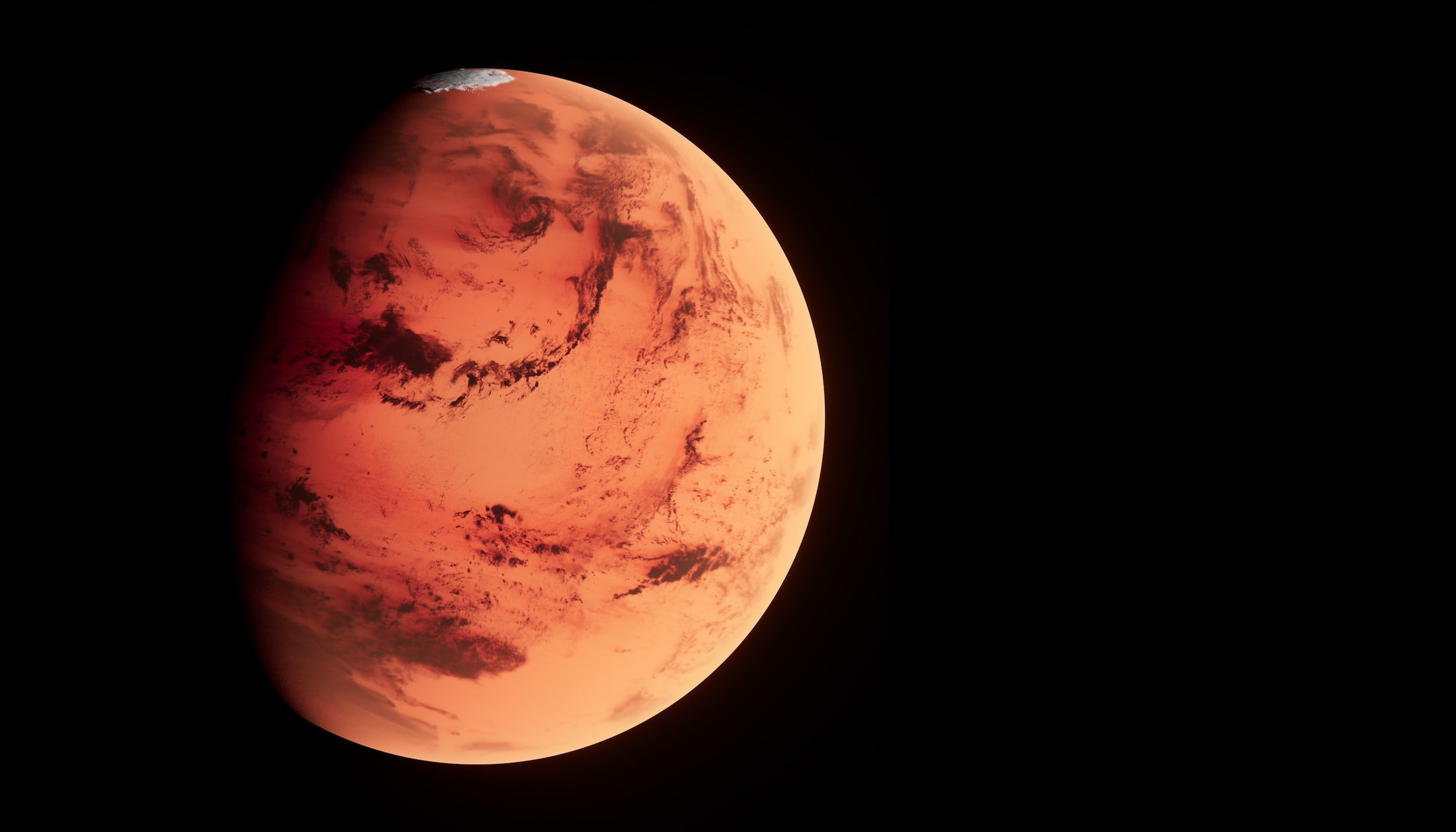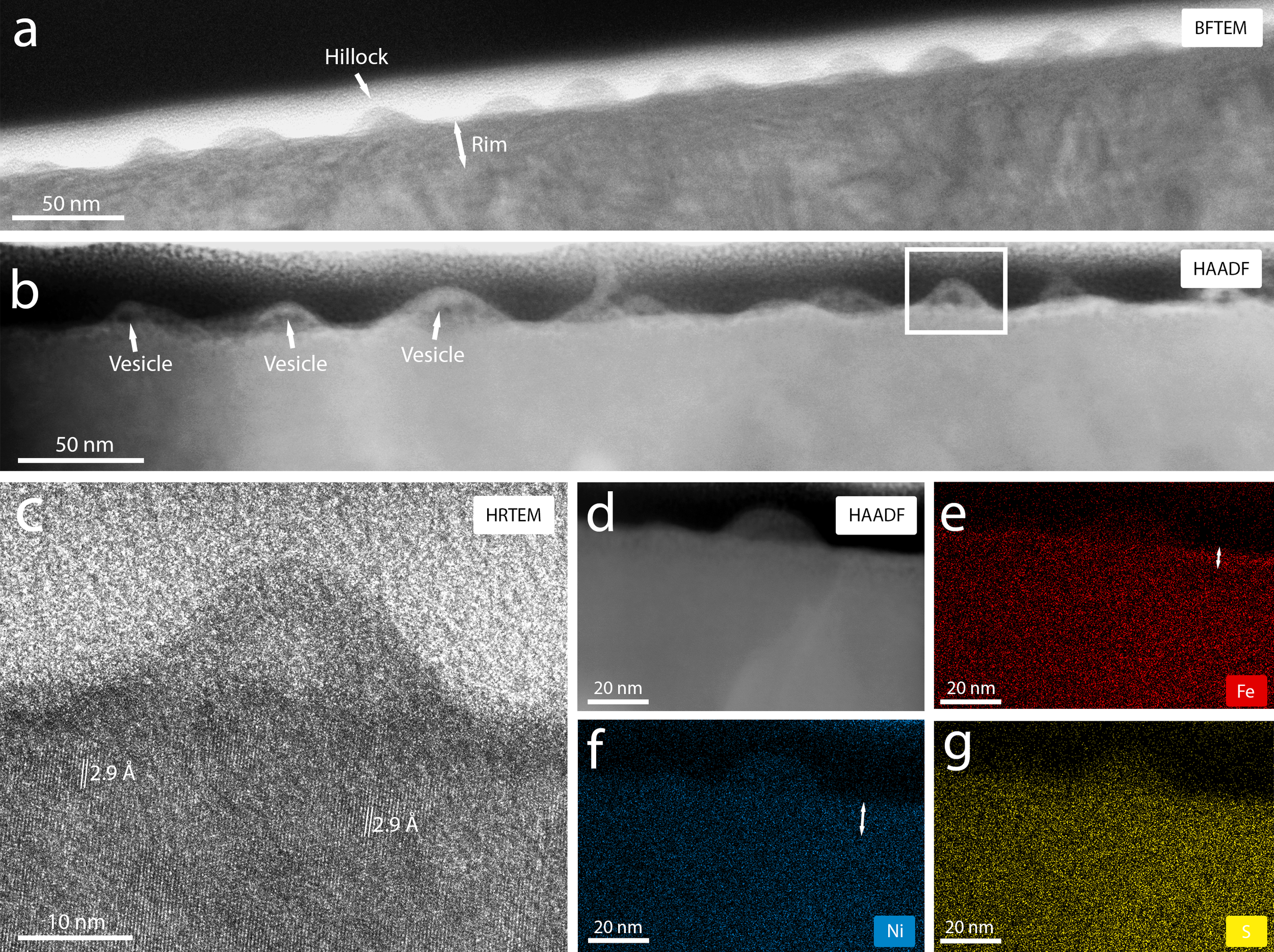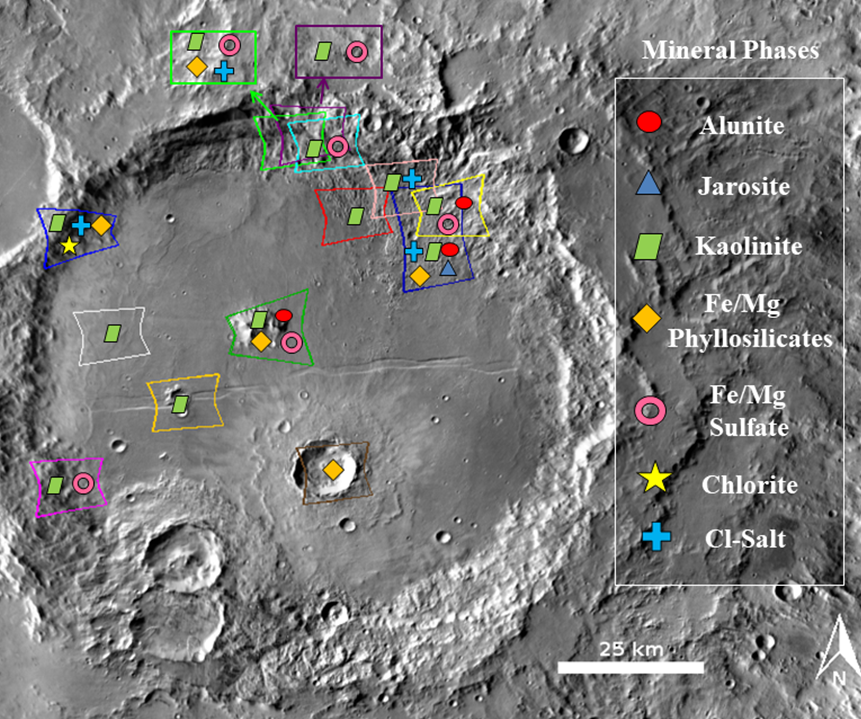
Research
-

Experimental simulations of space weathering on pentlandite
Pentlandite (Fe, Ni)9S8 is an important accessory mineral on asteroidal surfaces. It has been identified in returned regolith samples from asteroids Itokawa, Ryugu, and Bennu. Currently, systematic studies to understand the response of this mineral phase under space weathering conditions are lacking. In this work, we performed pulsed laser irradiation to simulate micrometeoroid impacts, and ion irradiation with 1 keV H+ and 4 keV He+ to simulate solar wind exposure for pentlandite.
-

Characterization of sulfides in samples from asteroid Bennu
Sulfide minerals are common accessory minerals in samples returned from asteroids Itokawa and Ryugu and carbonaceous chondrites. Sulfides are formed by aqueous alteration events, and their chemical and microstructural properties can also be modified by surface processes on airless bodies. Initial analyses of samples from asteroid (101955) Bennu returned by NASA’s OSIRIS-REx mission showed the ubiquitous presence of sulfides.
-

Evaluating the effects of space weathering on magnetite on airless planetary bodies
Magnetite is a relevant component of asteroidal surfaces as this mineral phase has been identified in carbonaceous chondrites, on the surface of asteroid Bennu through remote sensing observations, and in samples returned from asteroid Ryugu. However, the effects of space weathering processes on magnetite have not been explored. To investigate how this mineral responds to space weathering, here we simulate micrometeoroid bombardment and solar wind irradiation for magnetite using pulsed laser and ion irradiation, respectively.
-

Space weathering signatures in sulfide and silicate minerals from asteroid Itokawa
Transmission electron microscopy analyses of the polymineralic regolith particle RC-MD01-0025 show microstructural and microchemical characteristics indicative of space weathering on the surface of asteroid Itokawa. The depletion of sulfur and nickel was identified in space weathered rims on troilite and pentlandite minerals. This corresponds to the first report of nickel depletion in samples returned from asteroid Itokawa by the Hayabusa mission.
-

Acidic environments in Columbus Crater, Mars: implications for habitability
Several studies have suggested a significant water availability on ancient Mars that produced water bodies fed by surface runoff, precipitation or groundwater. Most of those studies have focused on the distribution and possible origin of those water bodies. However, the geochemistry of these lakes is and the implications for habitability is not well known. Columbus crater was previously proposed as a candidate groundwater-fed paleolake.